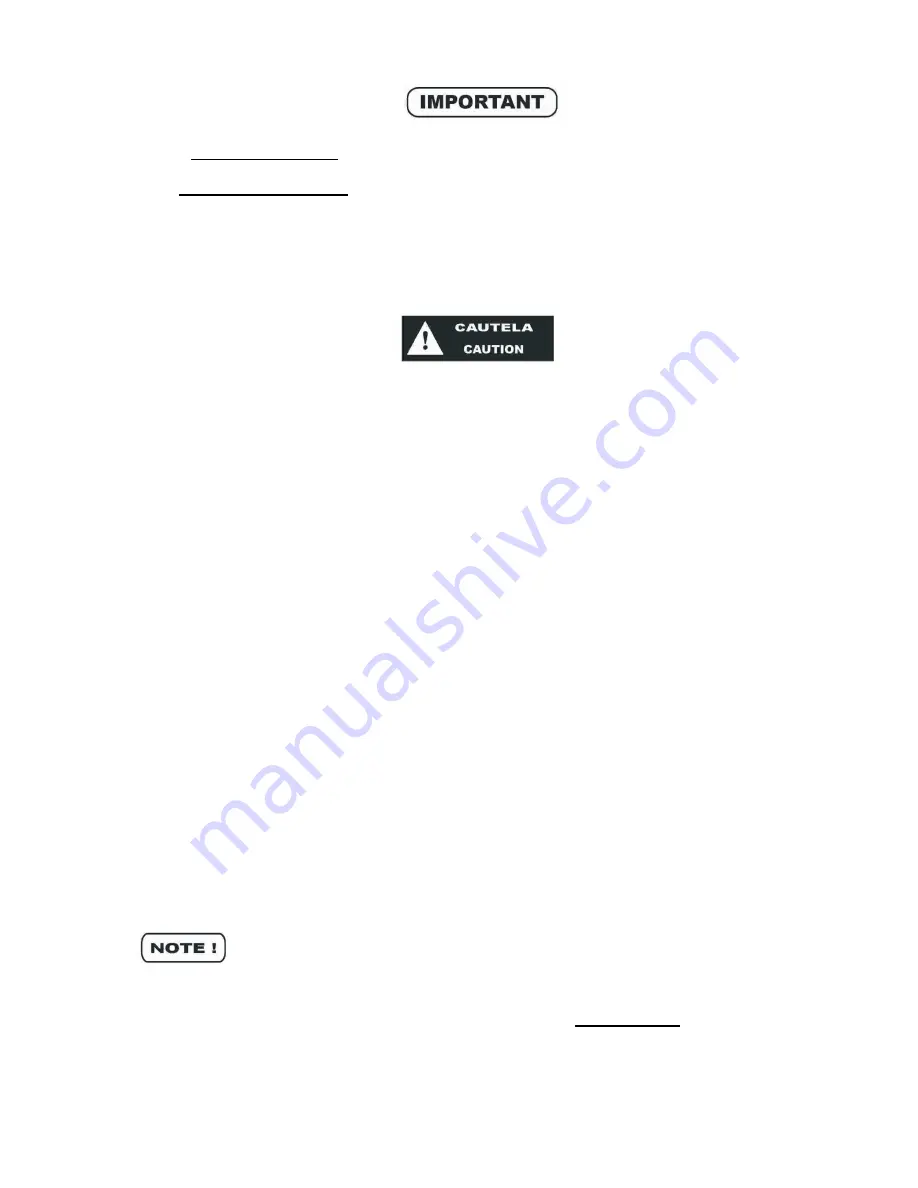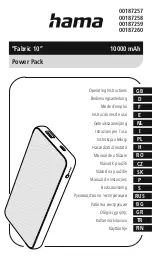
22
•
It is very important to respect the pressure maximum value recommended for the tool.
An excessive pressure can cause the break of the tool and equipment and can cause
accidents.
A too low pressure value to the tool can cause reduction in the performance and increase in
the oil temperature.
RELIEF VALVE ( RV) REGULATION
THE FOLLOWING ADJUSTMENT OPERATIONS SHOULD BE CARRIED OUT BY QUALIFIED
PERSONNEL WITH PROPER EQUIPMENT. DO NOT CARRY OUT REPAIRS OR
ADJUSTMENTS WITH EXPERIMENTS OR ATTEMPTS WHICH, BESIDES DAMAGING THE
EQUIPMENT, COULD CAUSE ACCIDENTS
1. Prepare an Allen wrench of 4 mm, an adjustable open wrench of 13 mm. and a hydraulic
tester for measuring the pressure and flow (similar to that one shown at the end of this
paragraph). If you have not a proper tester, it is possible to use a simple pressure gauge
graduated up to about 200 bar, installing it on the pressure line of the power pack (at the
end of the flexible pressure hose), or installing it directly on the female quick coupler and
introducing the female coupler into the male one of the power pack.
2. Loosen the blocking nut of the RV adjusting screw with a wrench of 13 mm.
3. After having heated the power pack motor and the hydraulic oil (about 40-50° C), bring
the flow lever in ON position. This operation will accelerate the motor. Take care that
there are not oil leaks in the equipment during this phase.
4. Visualize the maximum pressure value indicated in the pressure gauge. If the RV has a
too high calibration, the motor can be stopped because it cannot support the effort caused
by a too high load. In this case, turn the RV anticlockwise lowering the calibration
5. With the accelerated motor, adjust the RV acting on the central screw using the Allen
wrench of 4 mm.
-
Turning CLOCKWISE, the pressure INCREASES
-
Turning ANTICLOCKWISE, the pressure DECREASES
6. Visualizing the pressure gauge, calibrate the valve at a value of about 155 bar, this
calibration will correspond to a real valve setting of 140 bar.
The pressure adjusted in this condition is defined also: STATIC PRESSURE, that is the pressure
measured at zero flow. The RV of the power pack should be adjusted at a value of 10% higher
than the maximum value recommended for the tool. This overcalibration, is necessary for
eliminating inexactness of the RVs that really discharge – cracks the over pressure at a value of
about the 10% lower than the calibrated value of the static pressure.
EXAMPLE: if the datum of maximum pressure for the tool is 140 bar, the RV should be
calibrated at about 155 bar. This will correspond at a REAL calibration of about 140 bar.










































